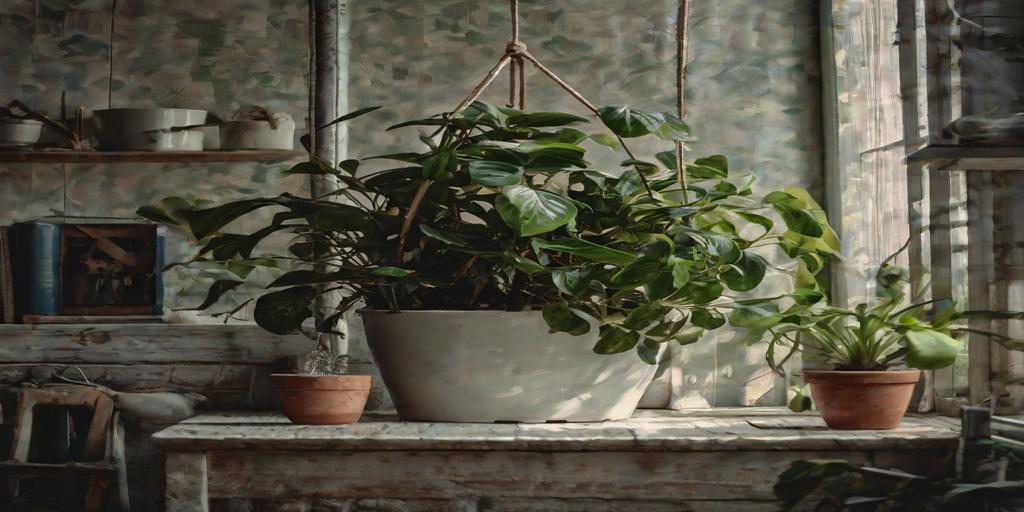
Why Your Low Light Hanging Plants Grow Slowly (And How to Fix It)
Struggling with slow-growing low light hanging plants? Discover the key reasons behind stunted growth and actionable fixes to revive your indoor greenery!
Introduction
Do your low light hanging plants seem to be stuck in slow motion? You’re not alone! Many indoor gardeners face this frustrating issue, but the good news is—it’s fixable. Low light conditions can be tricky, but with the right care, your plants can thrive. Did you know that over 60% of houseplant problems stem from improper lighting or watering? Let’s dive into the common culprits slowing down your plants and how to turn things around!
Common Reasons Why Your Low Light Hanging Plants Grow Slowly
Insufficient Light
Even though they’re labeled as “low light” plants, they still need some light to photosynthesize. If your hanging plant is tucked too far into a dark corner, it may struggle to grow.
Overwatering or Underwatering
Too much or too little water can stress the roots, making it harder for your plant to absorb nutrients. Soggy soil leads to root rot, while dry soil causes dehydration—both slow down growth.
Poor Soil Quality
If the soil is too compact or lacks nutrients, your plant’s roots won’t have room to expand or access the food they need. Over time, this stunts growth and weakens the plant.
Lack of Humidity
Many hanging plants, especially tropical varieties, thrive in humid environments. Dry air can cause leaves to dry out and slow down overall growth.
Pot-Bound Roots
When roots fill up the entire pot, they have no space left to grow. This restricts nutrient uptake and can halt new growth completely.
Temperature Stress
Extreme cold or hot drafts can shock your plant, slowing its metabolism. Most low-light hanging plants prefer stable, warm temperatures.
How to Fix Slow Growth in Low Light Hanging Plants
Adjust Lighting
Move your plant closer to a window with indirect light, or supplement with a grow light if natural light is too dim. Even a small increase in brightness can make a big difference.
Water Correctly
Check the soil before watering—stick your finger an inch deep. If it’s dry, water thoroughly; if it’s damp, wait. Avoid letting the plant sit in standing water.
Repot When Needed
If roots are circling the pot or poking out of drainage holes, it’s time to repot. Choose a slightly larger container and fresh, well-draining soil.
Boost Humidity
Mist your plant regularly, place it on a pebble tray with water, or use a humidifier nearby. Grouping plants together can also help raise humidity levels.
Fertilize Wisely
During the growing season (spring and summer), use a balanced, diluted fertilizer every 4-6 weeks. Avoid over-fertilizing, which can burn roots.
Prune Leggy Growth
Trim back long, sparse stems to encourage bushier growth. This redirects energy to healthier parts of the plant and promotes new shoots.
Best Low Light Hanging Plants for Slow-Growers
Pothos
One of the easiest plants to grow, pothos thrives in low light and bounces back quickly from neglect. Its trailing vines make it perfect for hanging baskets.
Spider Plant
This resilient plant adapts well to indirect light and produces baby offshoots (spiderettes) that can be propagated for more plants.
Philodendron Heartleaf
With its heart-shaped leaves and vining habit, this plant grows steadily even in dimly lit rooms. It’s also very forgiving of occasional missed waterings.
ZZ Plant
Nearly indestructible, the ZZ plant grows slowly but steadily in low light. Its waxy leaves store water, making it drought-tolerant.
Peperomia
Compact and low-maintenance, peperomias come in many varieties, all well-suited for hanging baskets in low-light conditions. They grow slowly but stay lush with minimal care.
Conclusion
Slow-growing low light hanging plants can be revived with a few simple tweaks! From adjusting light exposure to optimizing watering habits, small changes make a big difference. Remember—patience is key. Give your plants time to adapt, and soon you’ll see lush, healthy growth. Ready to transform your indoor jungle? Start today!
